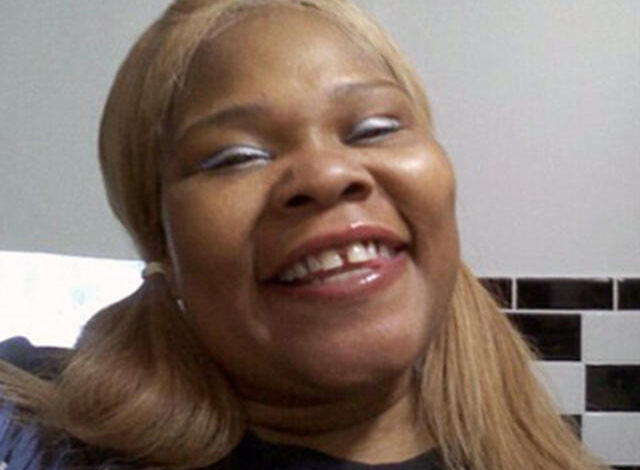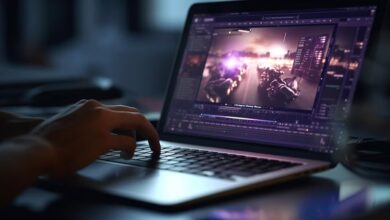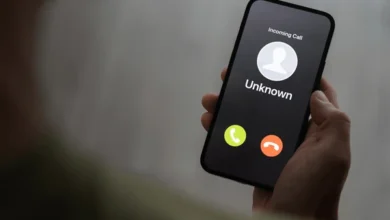Unraveling the Mystery: Analyzing Bahsid Mclean Selfie

In a world where selfies have become an integral part of our daily lives, there are some that leave us puzzled and disturbed. One such selfie, taken by Bahsid Mclean, sent shockwaves through both social media and criminal investigation circles alike. This captivating image not only captured his face but also revealed something far more sinister lurking beneath the surface.
Join us as we delve deep into the enigma surrounding Bahsid Mclean’s selfie, exploring its background, analyzing its content and symbols, unraveling possible motivations behind his actions, examining the impact of social media on modern crimes, and drawing parallels to similar cases with profound implications. Brace yourself for a journey that will challenge your perceptions and shed light on the complexities of this chilling phenomenon.
So buckle up! It’s time to unlock the secrets concealed within a mere snapshot – let’s investigate Bahsid Mclean’s haunting selfie together…
The Background of the Selfie and Its Context
In order to truly understand the impact of Bahsid Mclean’s selfie, we must first examine its background and the context in which it was taken. It all started with a gruesome crime that would send shockwaves through society.
On February 4, 2013, police discovered the dismembered body parts of Tanya Byrd scattered throughout different locations in New York City. The heinous act had been committed by none other than Bahsid Mclean himself – her own son. This horrifying revelation set off a chain reaction that would lead to one of the most bizarre selfies ever captured.
It was within this backdrop of violence and cold-blooded murder that Bahsid decided to take a selfie next to his mother’s decapitated head. The image itself is chilling – his face stoic with an eerie calmness as he poses beside such unspeakable horror.
But what compelled him to capture this moment? Was it a disturbing desire for notoriety or perhaps an attempt to taunt authorities? These questions linger as we try to decipher the motives behind such macabre behavior.
Stay tuned as we dive deeper into analyzing the content and symbols embedded within Bahsid Mclean’s haunting selfie, seeking answers amidst the darkness…
Analysis of the Content and Symbols in the Selfie
The Bahsid Mclean selfie has captivated the attention of many, raising questions about the content and symbols within it. At first glance, one cannot help but notice the disturbing nature of this image. Mclean stands before a mirror, holding his mother’s severed head in one hand and posing for the camera with a smile on his face.
This gruesome scene immediately sparks curiosity as to what these symbols might represent. The act of taking a selfie itself signifies a desire for recognition and validation in today’s social media-driven society. However, when combined with such macabre subject matter, it becomes clear that there are underlying psychological complexities at play here.
The severed head symbolizes power and control over another individual – in this case, Mclean’s own mother. It represents an extreme level of violence and dehumanization. By capturing this moment on camera, Mclean may have been seeking to assert dominance or perhaps even document his heinous act as a form of notoriety.
Furthermore, the smile on his face is puzzling to say the least. Is it an expression of satisfaction or pleasure? Or could it be masking deeper emotions such as guilt or detachment from reality? This unsettling contrast between violence and apparent happiness only adds to the enigma surrounding this photograph.
In analyzing the content and symbols within Bahsid Mclean’s selfie, we are confronted with more questions than answers. Its shocking nature forces us to confront uncomfortable truths about human behavior and our fascination with documenting every aspect of our lives through selfies. This image serves as a chilling reminder of how social media can amplify both dark impulses and questionable motives.
Stay tuned for further insights into possible motivations behind Mclean’s actions in our next blog post!
Possible Motivations behind Mclean’s Actions
Understanding the motivations behind Bahsid Mclean’s actions in taking a selfie with his mother’s decapitated head is no easy task. It is a disturbing and chilling act that leaves many questioning the depths of human depravity. However, it is important to delve into this dark subject matter to gain insight into the complexities of criminal behavior.
One possible motivation could be rooted in a desire for notoriety or infamy. In our age of social media, where attention-seeking behaviors are increasingly common, individuals may resort to extreme acts in order to garner shock value and capture widespread attention. The shocking nature of Mclean’s selfie certainly achieved this purpose, as it quickly gained traction online and generated significant media coverage.
Another potential motivation could stem from deep-seated psychological issues or an underlying mental illness. Acts as gruesome as this often indicate a detachment from reality and a lack of empathy towards others. Individuals who commit such acts may have distorted perceptions of right and wrong or harbor feelings of anger, resentment, or even hatred towards their victims.
It is also worth considering external factors that may have influenced Mclean’s actions. Growing up in an environment characterized by violence or abuse can leave lasting emotional scars on individuals, leading them down dangerous paths. If Mclean experienced trauma during his formative years, it could have contributed to his disturbed mindset and the ultimate decision to take such a macabre photograph.
While we can speculate about these possible motivations behind Mclean’s actions, ultimately only he truly knows what drove him to commit such an horrific act. The complexity of human psychology means that there are rarely simple answers when trying to understand criminal behavior.
By examining cases like Bahsid Mclean’s selfie with open minds rather than rushing towards judgment or condemnation, we can hope to gain valuable insights into the intricate workings of twisted minds – insights that might one day contribute towards preventing similar tragedies from occurring again in the future.
The Impact of Social Media on Modern Crimes
Social media has undoubtedly revolutionized the way we communicate and interact with one another. It has become an integral part of our daily lives, allowing us to connect with friends, family, and even strangers from all corners of the world. However, this powerful tool has also had its dark side when it comes to modern crimes.
One cannot deny that social media platforms have provided criminals with new avenues for carrying out their illicit activities. The ease of access and anonymity offered by these platforms make it convenient for individuals to plan and execute various types of crimes. From cyberbullying and harassment to identity theft and fraud, the possibilities seem endless.
Furthermore, social media has allowed crimes to be broadcasted in real-time or after they have been committed. We’ve seen countless examples where individuals live-stream horrific acts or share photos/videos of their criminal exploits as a means to gain attention or notoriety.
Another significant impact is how social media can influence people’s behavior. Platforms like Facebook, Instagram, or Twitter can create an environment where individuals feel pressured to showcase a certain image or lifestyle – leading some down dangerous paths in search of validation or acceptance.
Moreover, the vast amount of personal information shared on social media profiles makes users vulnerable targets for criminals seeking opportunities for thefts, kidnappings, stalking incidents – you name it!
In conclusion (avoid using “in conclusion”), while social media has opened up new possibilities for connecting people globally; it has also given rise to various risks associated with modern-day crime. As technology continues to advance at breakneck speed; society must remain vigilant about the potential dangers lurking behind our screens
Similar Cases and Their Implications
While Bahsid Mclean’s selfie may be a chilling and rare occurrence, it is not the only instance of individuals documenting their crimes or disturbing actions on social media. The digital age has brought about a new level of narcissism, where some people feel the need to seek attention and validation through shocking behavior.
One such case that garnered significant media attention was that of Derek Medina in 2013. He posted a photo on Facebook showing his wife’s lifeless body with the caption “I’m going to prison or death sentence for killing my wife.” This gruesome act shocked many, raising questions about the dark underbelly of social media and its potential role in fostering violence.
In another disturbing incident, Amanda Taylor recorded herself setting fire to her ex-boyfriend’s car and then proudly shared it online. Her actions not only showcased her reckless behavior but also highlighted society’s obsession with capturing moments for viral fame at any cost.
These cases raise important ethical questions surrounding our increasing reliance on social media as an outlet for self-expression. Are these individuals motivated by a desire for infamy? Or are they seeking help or attention from others who may stumble upon their posts?
The implications of such cases go beyond mere shock value; they reveal deep-seated issues within our society. They challenge us to examine how we consume content online and how we respond when confronted with disturbing images or messages.
Furthermore, these incidents serve as reminders that social media platforms must take responsibility in monitoring harmful content more effectively. While freedom of expression is essential, there needs to be a balance between allowing users’ creativity while preventing them from crossing dangerous thresholds.
To truly understand the complexities behind these occurrences, more research is needed into the psychological factors driving individuals like Bahsid Mclean to document their heinous acts publicly. Only then can we begin developing strategies and interventions aimed at addressing such behaviors before they escalate further.
It is undeniable that similar cases shed light on the dark side of social media and its potential to amplify criminal behavior
Conclusion: Understanding the Complexities of Bahsid Mclean’s Selfie
Understanding the Complexities of Bahsid Mclean’s Selfie
In analyzing Bahsid Mclean’s selfie, we have delved into its background, context, content, symbols, and possible motivations behind his actions. We have also explored the impact of social media on modern crimes and examined similar cases to gain a broader perspective.
But it is important to acknowledge that unraveling the mystery surrounding this particular selfie is no easy task. The mind of an individual who would commit such a heinous act as murdering his own mother is undoubtedly complex and multifaceted. While our analysis may provide some insights into Mclean’s mindset at that moment in time, it can never fully capture the full extent of his thoughts and emotions.
Furthermore, it is crucial to remember that while social media played a role in documenting this horrific crime, it should not be solely blamed or used as a scapegoat for such acts. Social media platforms are tools that reflect society as a whole – both its positive aspects and its darker side.
Comprehending the complexities of Bahsid Mclean’s selfie requires acknowledging the inherent complexities within human nature itself. It serves as a stark reminder of how individuals can navigate between virtual spaces and physical realities with devastating consequences.
As we continue to grapple with these unsettling cases that emerge from our ever-connected digital world, let us strive for deeper understanding rather than simple condemnation. By studying these incidents through an objective lens without losing sight of their gravity, we can work towards preventing future tragedies while fostering empathy within our society.
The case of Bahsid Mclean will forever remain embedded in our collective memory – serving as a somber reminder to remain vigilant about mental health issues and cultivate compassion towards one another. Only by doing so can we hope to prevent similar instances from occurring in the future.
So let us learn from this tragedy; let us approach each other with kindness; let us seek out those who may be struggling silently; and let us strive for a world where no one feels compelled to document their darkest



